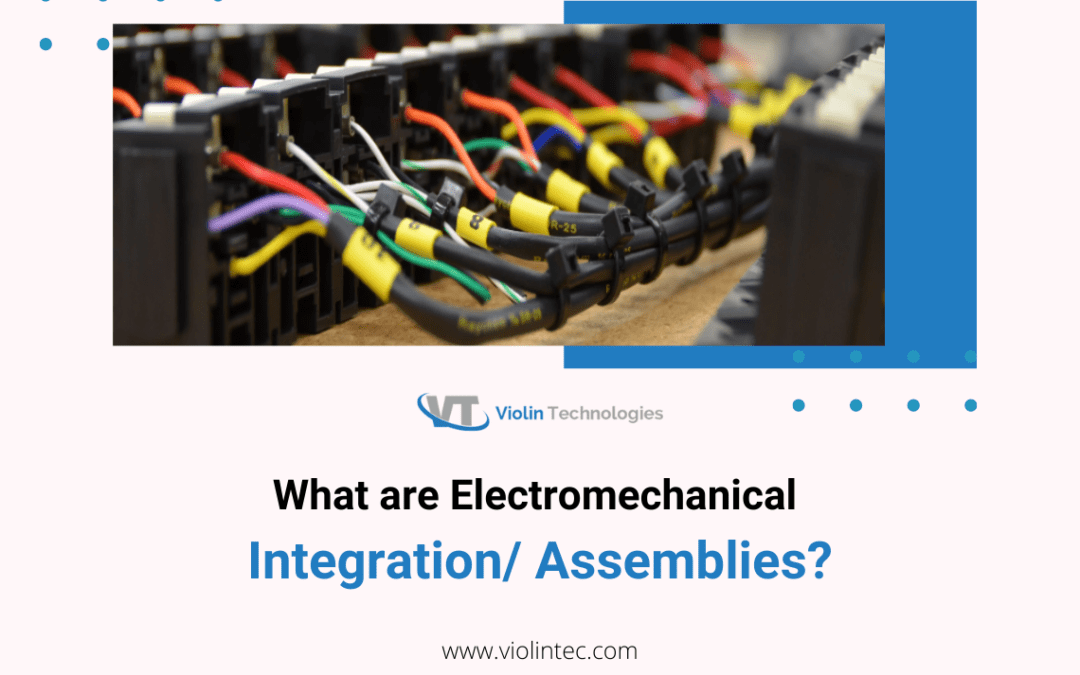Skilled electromechanical assemblies/ integration specialists use highly detailed blueprints to integrate the electrical circuitry with the mechanical elements during the assembly process. These specialists must be proficient in various electrical systems fabrication techniques, such as circuit layout, surface mounting technique, through-hole mounting schemes, and soldering. The assembly process necessitates an in-depth understanding of each electrical and mechanical component used and handling small and sometimes delicate mechanical components with exceptional precision, cohesion, and focus.
Furthermore, electromechanical devices are used in Integrated Circuits to perform a variety of functions.
Different Types of Electromechanical Integration:
Electromechanical components are typically designed and built to perform a specific function. Among the most frequently manufactured are;
1. DC Power Assembly:
A power source converts a current to the right format and voltage necessary to power at least one electrical output. The power source can be constructed as standalone devices or as components of larger appliances. A power supply assembly’s general components include Regulators, Amplifiers, Transformers, Rectifiers, and Water-proofing components.
2.Cables and circuits Assembly:
Cable and circuit assemblies are cables or wires that transfer power or data. Typical elements include:
- Wires and cables used to transmit electricity or signals
- Connectors link the cables and wires to the electrical/electronic equipment.
- Fuses to protect against power surge damage.
- Relays are used to turn on and off the electricity at high power voltages.
- Insulators shield the components from each other and the surroundings.
- Ties are used to secure the wire harness to the device or system.
3.Panel Assembly:
Panels contain electromechanical assemblies. They are primarily used to manage electrical power distribution into the linked circuits. The assembly process may include the following steps:
- Putting each component in its proper place on the rear panel
- Making apertures for components by punching or sawing
- Drilling mounting hardware holes
4.Sensor&Switch Assembly:
Switch assemblies and sensor assemblies are two fundamental components of electronic systems that differ in the function they serve and the components utilized in their development. Sensor assemblies transform stimuli such as sound, heat, light, or motion into electrical signals. Switch assemblies are often used to connect or detach a power source from electrical components.
Switch assemblies typically include the following components:
- Control contacts for the passage of electrical current flow to the switch
- Wiring harness for securing the switch and allowing electricity to enter or depart the switch body.
- A switching mechanism is typically a toggle device for regulating the gadget’s functionality.
- Sensor assemblies normally have the following parts:
Sensing devices for detecting physical attributes such as temperature, motion, humidity, and radiation.
- Protective housings for sensor components
- Transmitters for broadcasting information about the targeted property.
- Connection heads for connecting the sensor wires to the transmitter

Applications of Electromechanical Integration:
Electro-mechanical Integration is used in various industry sectors for different application aspects, such as panel boxes, military weapons, and sensor switches for the railways and airline industry. Apart from these, the following are some of the industries that rely on them on a regular basis:
- Automobile: Electromechanical assemblies used in the automotive sector are meticulously developed to provide high reliability and extended operational life while also allowing for the design flexibility required to suit a wide range of system needs. Speed sensors, heat sensors, and switching mechanisms are all common electromechanical components in automobiles.
- Agriculture and Farming: To function successfully and efficiently, agricultural equipment such as tractors, sprayers, and combines rely on switches, sensors, and other custom-designed electromechanical components.
- Fire defence: In hospitals, institutions, and other public and private areas, high-performance electromechanical assemblies are a crucial component of fire protection and suppression systems. These components, which are made of high-quality fire-resistant materials, power everything from staircase pressurization and smoke extraction fans to backup generators and warning systems.
Checklist For Choosing Best Electromechanical Assembly Manufacturers:
Given the importance of electromechanical components in many applications, they must be correctly planned and executed. If the production of these components is to be outsourced to a contract manufacturer it is critical to locate a reliable electromechanical assembly partner. Consider the following:
- Complete Engineering and Design Assistance. Your contract manufacturer should be able to assist you with all of your design and engineering requirements, whether you need assistance creating a new assembly or validating an existing assembly design.
- Resources for Prototyping. Before proceeding to full production, your partner should have the capabilities to produce and test prototypes of the assembly to evaluate its structure and performance.
- Cost-effective Production & Execution: As a result of the preceding factors, the estimated cost of all services and the manufacturing of a specific electro-mechanical assembly will be significantly more flexible than the offerings of other suppliers.
Conclusion
It is obvious that electromechanical assemblies play a critical role in a wide range of industries and applications; thus, proper design and manufacturing are essential. That is why it is vital to deal with an electromechanical assembly manufacturer who has extensive expertise and ability. They may offer electromechanical assemblies that are dependable and long-lasting in their intended applications. Contact us today to learn more about our electromechanical assembly capabilities.

